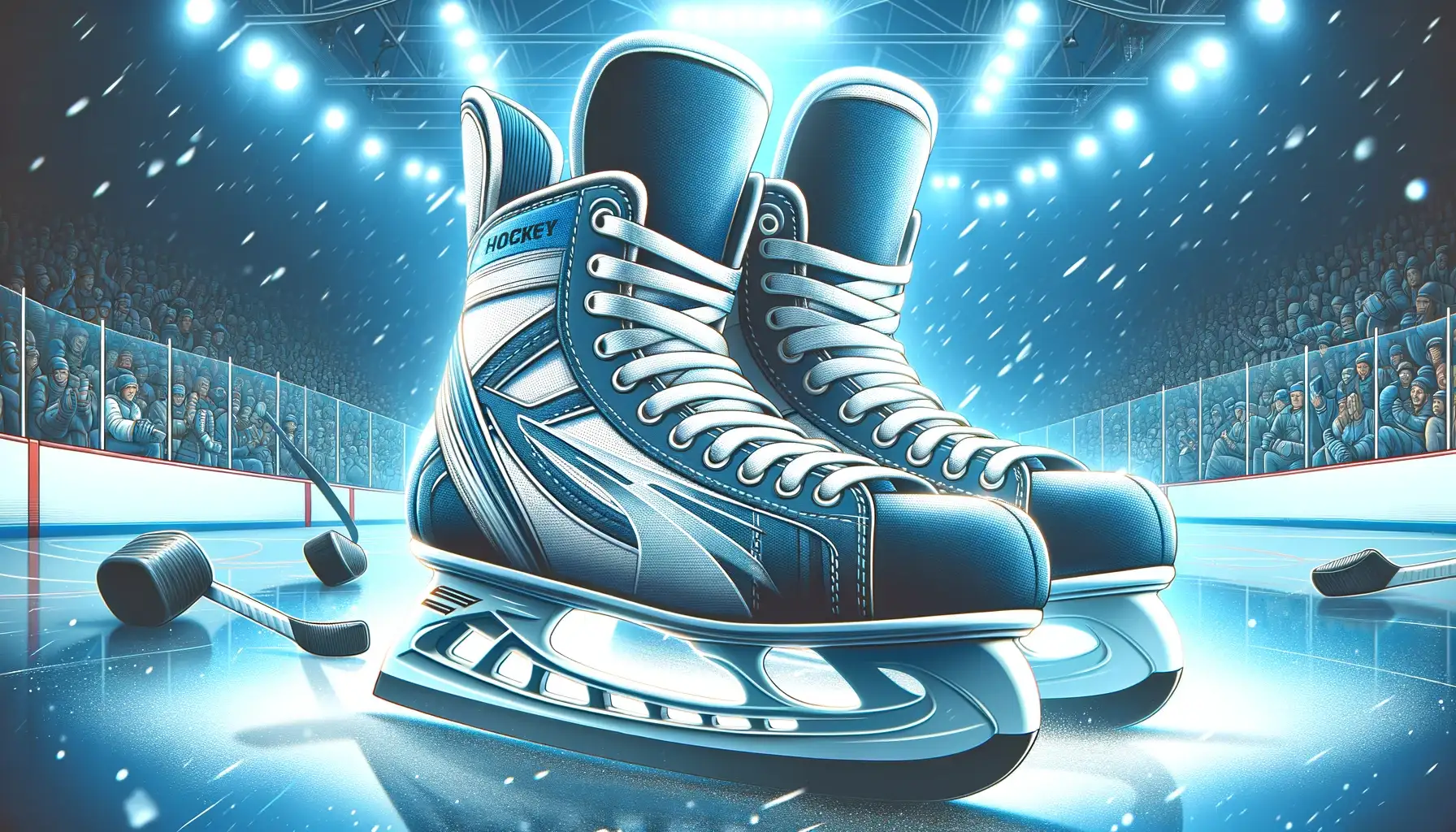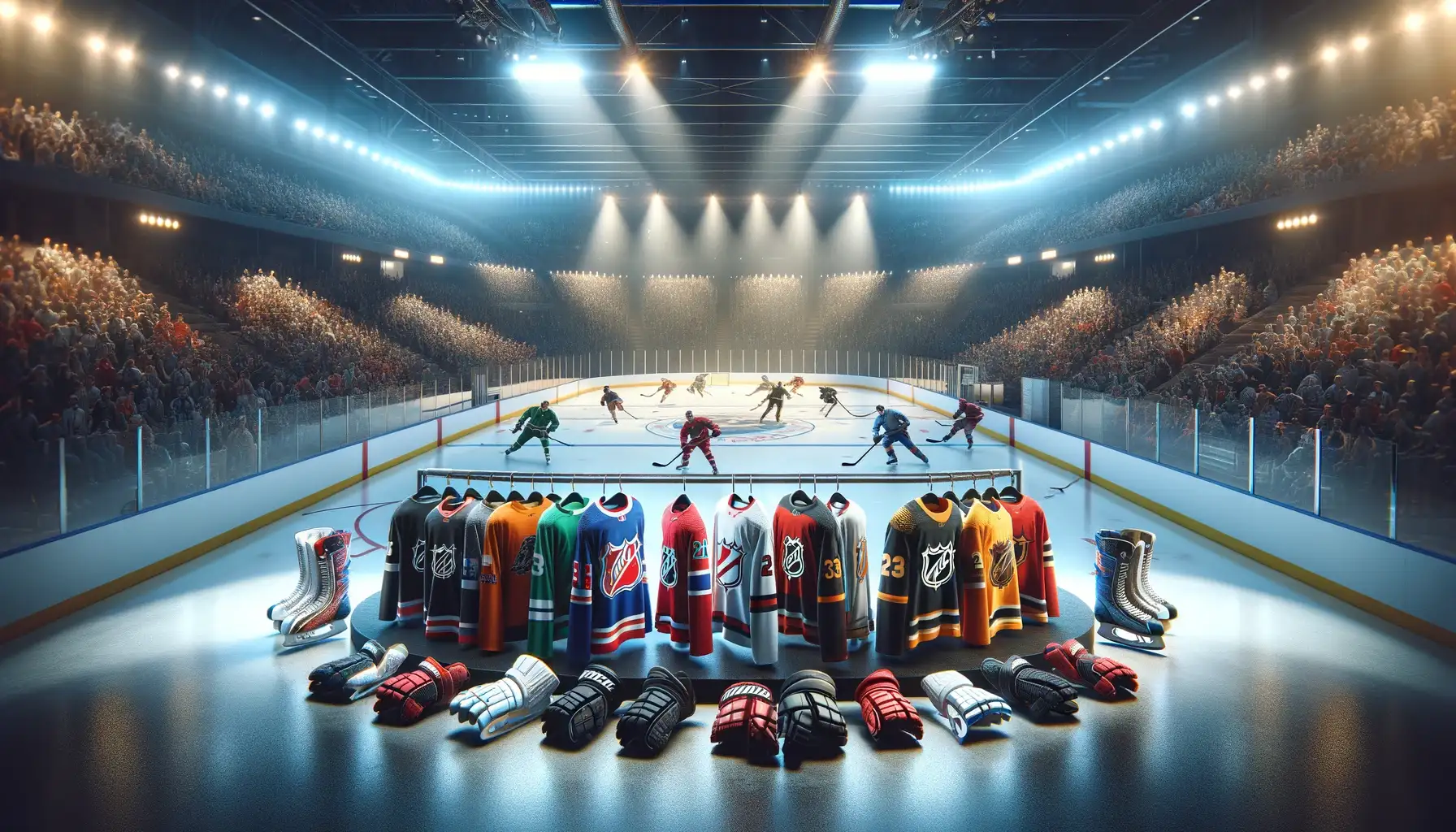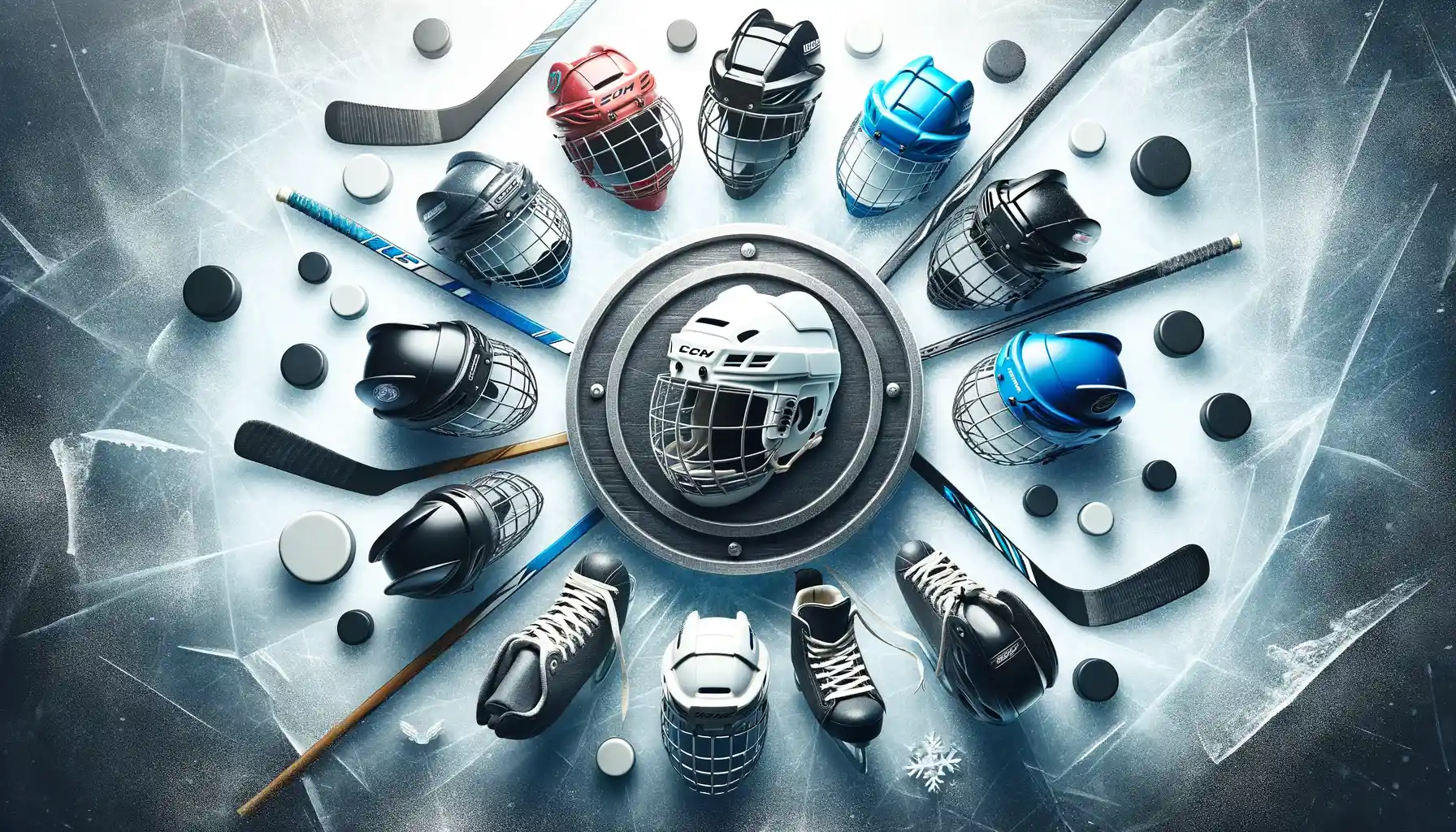Most players focus on the brand of their skates or how sharp the blades feel—but few think about the shape of the blade’s hollow. That small groove under your skate can change everything: how hard you stop, how fast you glide, how tight you turn, and how long your legs hold up through a shift.
I’m going to break down what matters when choosing a skate hollow: the depth of the cut, how it interacts with your weight and skating style, and what’s changing in 2025-2026—from NHL trends to the growing use of Flat Bottom V (FBV) edges. You’ll also find real commentary from experienced skaters, advice for sharpening and testing different setups, and updated guidance based on position, ice conditions, and playstyle.
What Is a Hockey Skate Hollow?
The skate hollow is the concave groove that runs down the bottom of your skate blade. While it might look flat at first glance, every properly sharpened hockey skate has a curved radius that determines how much of the blade contacts the ice. This curve, or Radius of Hollow (RoH), affects how your edges bite the ice and how your skates glide, grip, and respond during quick turns, stops, or accelerations.
Choosing the right hollow can enhance control, increase speed, reduce fatigue, and even help prevent injuries. It’s one of the most important aspects of skate performance—and one that’s entirely customizable.
A Brief History of Skate Hollows
Early hockey players sharpened their blades by hand, carving out rough grooves with whatever tools they had available. These early hollows were inconsistent and based entirely on feel. It wasn’t until the mid-20th century that mechanized skate sharpening machines brought precision and standardization, allowing players to dial in the exact hollow that suited their weight, skill level, and ice conditions. Today, with tools like Sparx and pro-grade equipment available at home, hollow customization has never been more accessible.
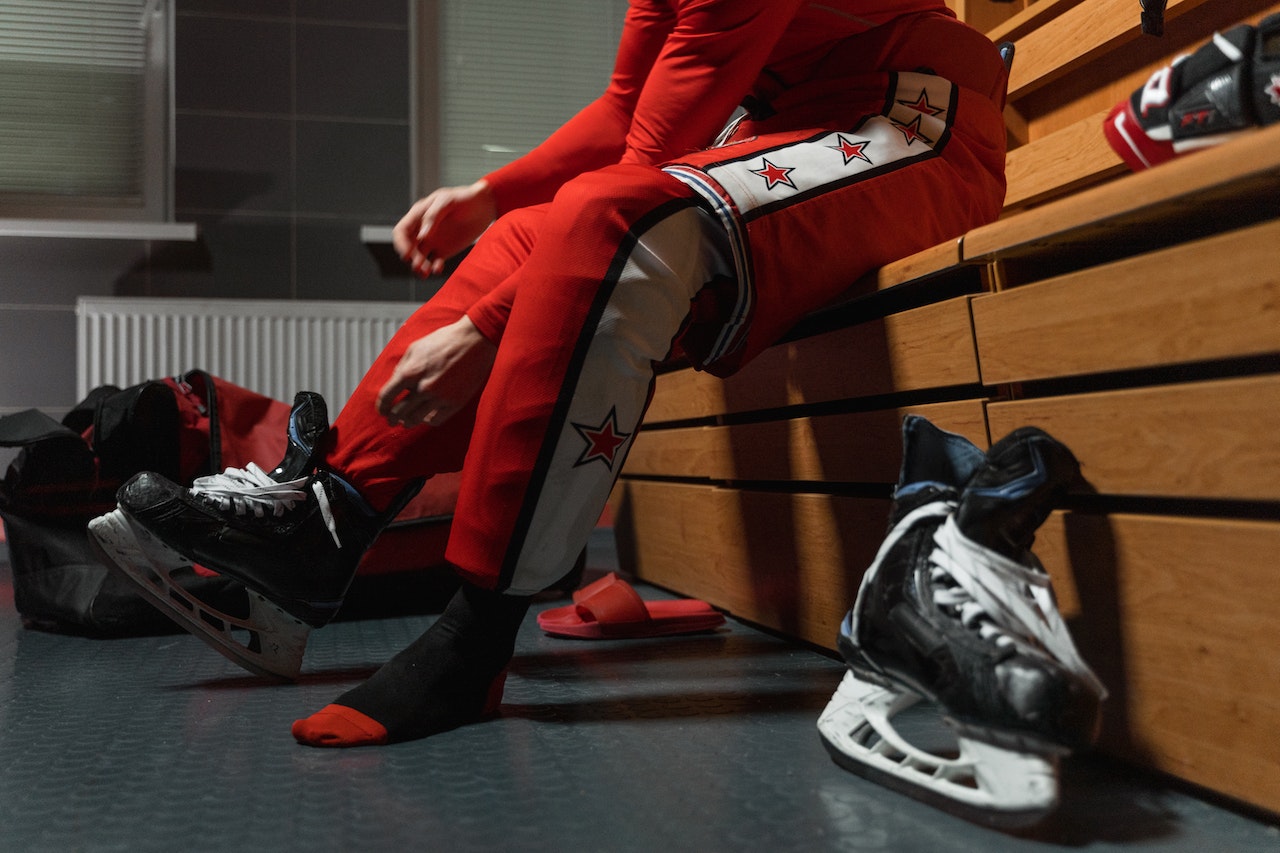
Skate Blade Anatomy: Edges, Hollow & Pitch
To understand how hollow radius affects performance, it’s helpful to know the basic parts of your skate blade:
-
Inside and Outside Edges: These are the sharp contact points on either side of the blade.
-
Hollow: The U-shaped (or sometimes V-shaped) groove between those edges.
-
Pitch: The blade’s forward or backward lean, which influences acceleration vs. balance.
Key Terms to Know:
-
Radius of Hollow (RoH): The depth of the blade’s curve. Smaller RoH (like 3/8″) = deeper hollow = more grip. Larger RoH (like 3/4″) = shallower hollow = more glide.
-
Flat Bottom V (FBV): A modern grind with a flat center and angled sides, designed to combine glide and bite.
-
Pitch: Forward pitch increases agility and acceleration; neutral or rearward pitch improves stability and glide.
Blade Geometry and Hollow Depths: Why It Matters
Deep vs. Shallow Hollows
-
Deeper Hollow (e.g., 3/8″, 7/16″)
-
🟢 More grip and edge control
-
🔴 Less glide, more fatigue
-
✅ Great for lightweight players, youth, and agility-focused roles
-
-
Shallower Hollow (e.g., 5/8″, 3/4″, 1″)
-
🟢 More glide, easier stride
-
🔴 Less bite, requires better edge control
-
✅ Preferred by heavier skaters, advanced players, and those who value top speed
-
Performance Effects by Hollow Depth
-
Deeper hollows favor quick stops, aggressive turns, and tight maneuverability.
-
Shallower hollows favor fluid skating, longer glides, and less energy drain—especially on hard ice or in speed-oriented roles.
How to Choose the Right Skate Hollow for Your Game?
There’s no universal answer when it comes to skate hollows—your ideal setup depends on how you skate, what surface you’re on, and what you want out of your performance. Below is a refined breakdown to help you make sense of it all, from the factors that influence hollow depth to how pros and everyday players approach customization.
Key Factors That Shape Your Ideal Hollow
1. Skill Level
-
Beginners typically do better with deeper hollows (e.g., 3/8″ or 1/2″) because they offer more grip, making it easier to stop and turn.
-
Experienced skaters often shift toward shallower hollows (e.g., 5/8″, 3/4″, 11/16″) for better glide and less drag once edge control improves.
Different hockey brands offer different features when it comes to hockey skates. Take a look at our review of top hockey skates brands to find a skate that will suit your specific needs and preferences.
2. Player Weight
-
Lighter players need deeper cuts for bite—they don’t apply as much pressure into the ice.
-
Heavier players generate more pressure naturally and can benefit from shallower hollows for smoother glide and longer strides. This matches Reddit users like flinkazoid (210 lbs) who report greater efficiency at 7/8”.
3. Ice Conditions
-
Hard ice (cold indoor rinks) = deeper hollow for grip.
-
Soft ice (warmer rinks, late practice slots) = shallower hollow to reduce drag and avoid digging in too deep.
4. Playing Style
-
Agility-focused skaters who rely on quick starts, stops, and tight cuts favor deeper hollows.
-
Speed-focused skaters benefit from a shallower radius to maximize glide and save energy.
5. Skate Fit
A precise fit matters. Loose skates can negate the benefits of your hollow, while snug, properly sized skates allow the blade to perform as expected.
Use this handy checklist to navigate the key factors you should consider when selecting your ideal skate hollow:
| Player Type | Suggested Hollow | Why It Works |
|---|---|---|
| Beginner | 1/2" – 5/8" | Grip and control make skating more stable |
| Intermediate | 7/16" – 1/2" | Balanced bite and glide as technique improves |
| Advanced | 3/8" – 7/16" | High bite for tight turns and precision |
| Power Skater | 5/8" – 3/4" | Maximum glide, less leg fatigue |
| Heavier Skaters | 5/8" – 7/8" | Enough edge without excess friction |
Common Skate Hollow Preferences by Position
Positional play influences edge demands. Here’s how skate hollows typically break down:
Check out this quick reference guide detailing common skate hollow preferences based on player positions, providing an insight into their rationale.
| Position | Hollow Range | Why It Fits |
|---|---|---|
| Wingers | 3/8” – 5/8” | Need tight turns and fast acceleration |
| Centers | 3/8” – 3/4” | Require balanced control for both zones |
| Defense | 1/2” – 7/8” | Prioritize speed and reach, especially when heavier |
| Goalies | 1/2” – 1” | Favor glide and lateral movement over bite |
How Hollow Depth Impacts Performance
| Hollow Type | Advantages | Trade-Offs |
|---|---|---|
| Deep (1/4"–1/2") | Maximum bite, tight turns, strong grip | More drag, more fatigue, reduced top-end speed |
| Standard (1/2") | Balanced control and glide | Jack of all trades, master of none |
| Shallow (5/8"–3/4") | Faster glide, easier on the legs | Requires better edge control, less bite |
| Very Shallow (7/8"–1") | Great for speed and sliding (goalies, elite forwards) | Minimal grip, challenging for beginners or light skaters |
Testing & Tuning: Find Your Fit
-
Start at 1/2”, unless you’re under 150 lbs or playing goal, in which case start at 5/8”.
-
Change gradually—one step up or down (1/16″) at a time.
-
Try practice drills, not just scrimmages, when testing new hollows. Focus on stops, cuts, and transitions.
-
Track performance and fatigue. Do your legs feel cooked mid-game? You might be on too deep a hollow.
After exploring the right hockey skate hollow, enhance your selection with our guide on How to Buy Hockey Skates, ensuring a perfect match for your skating needs.
The image below lists several of the more common hockey skate sharpening hollows that are often offered at skate shops.
Hockey Skate Sharpening Hollows Chart
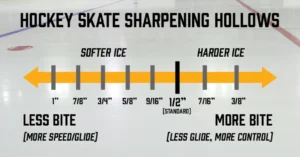
Skate Hollow Maintenance, Sharpening Tips & Final Takeaways
Choosing the right skate hollow is just the beginning—maintaining that edge is what keeps your performance consistent. From sharpening schedules to blade care and sharpening chart basics, this section covers what every skater should know.
Skate Sharpening: Why It Matters?
A poorly sharpened blade can throw off your entire game. The radius of hollow (RoH) only delivers results if it’s applied evenly across the blade—and that’s where professional sharpening makes the difference.
Why Go Pro?
-
Consistency: Machines and trained sharpeners ensure even edge depth from heel to toe.
-
Precision: Custom hollows like 11/16″ or 7/8″ require exact angles not all shops offer.
-
Edge quality: Dull, uneven, or nicked blades reduce your grip and increase injury risk.
For additional details, consider referring to our skate sharpening guide to learn how to fine-tune your edges and keep your skates ready for the game.
Maintaining Your Hollow Between Sharpenings
Even the best hollow won’t help if your blades are damaged, wet, or worn down. These small habits preserve your edge:
-
Dry blades immediately after each session to prevent rusting.
-
Use skate guards on any hard surface—concrete will wreck your hollow in seconds.
-
Avoid dropping your skates—a single nick can throw off your RoH.
🧊 Tip: Honing stones help realign edges between sharpening. Many players use them after each skate, especially with sharper hollows like 3/8″.
Hollow Comparison: Common Radii & What They’re Best For
Here’s a simplified version of common sharpening options and who tends to use them:
| Radius of Hollow | Depth | Best For | ||
|---|---|---|---|---|
| 3/8" | Deep | Lightweight skaters, quick stops, tight turns | ||
| 7/16" – 1/2" | Medium | Most common, good balance of grip and glide | ||
| 5/8" – 3/4" | Shallow | Heavier players, speed-focused skaters | ||
| 7/8" – 1" | Very Shallow | Glide-focused play, goalies, advanced skaters | ||
| Flat Bottom V (FBV) | V-shaped | Hybrid feel: bite + glide, popular in elite circles |
Common Questions On Hockey Skate Hollow
Is 5/8 or 1/2 sharper?
The terms 5/8 and 1/2 refer to the radius of the hollow carved into the bottom of a hockey skate blade. A 1/2 inch hollow is considered sharper because it’s deeper, meaning the edges of the blade will dig into the ice more, providing better grip and maneuverability. A 5/8 inch hollow is shallower, providing less grip, but more glide and speed.
What blade Hollow do NHL players use?
There’s no standard. Many use 5/8″, 3/4″, or even 7/8″ to maximize speed while maintaining control. Some go shallower in practice and deeper for game nights.
What does shallow hollow mean?
A shallow hollow has a larger RoH, like 3/4″ or 1″. It gives less grip but more glide, ideal for faster skating or heavy players who can generate natural bite.
Different hollow depths can impact your ice skating techniques. Refer to our ice hockey skating drills to understand how your chosen hollow can affect your maneuvers on the ice.
Skater Insights: Real-World Takeaways from the Ice
I have gather some real user feedback, preferences, and surprising revelations from Reddit and other community forums. If you’re new to hollow experimentation or just curious about what others are skating on, these firsthand comments offer valuable perspective.
“The day I switched to 11/16″ was the day I stopped feeling like I was fighting my skates. Everything clicked.” – r/hockeyplayers
“I’m 5’11”, 210 lbs, and use 7/8. I don’t need a deep cut—gravity does the work. Shallower helps me glide longer with less effort.”
“3/8” works best for me—lightweight, quick edge control. I’ll take grip over glide any day.”
“1″ feels like floating. Less effort, more speed. I hated 3/4”—felt like I was skating through mud.”
“I used 5/8 my whole life until I tried 7/16 by accident. Never looked back—way more control.”
“Don’t overthink it. Start at 1/2″, skate on it a few times, then adjust based on how it feels.”
“Sharpening is everything. Even a great hollow doesn’t help if your edges are dull or nicked.”
“Honing stone after every skate—especially if you go sharp. Keeps your edges straight.”
Final Thoughts: Your Hollow Is Your Signature
The right hollow doesn’t come from a chart—it comes from repetition, feedback, and testing. Players on Reddit, in the NHL, and in youth leagues alike experiment constantly to find what fits their weight, ice conditions, and skating style.
As your skills evolve, so will your preferences. That’s normal.
Start with what’s recommended—but never stop tuning.
To understand the differences between hockey skates and figure skates, explore our comprehensive guide on Hockey Skates vs. Figure Skates. Discover which type of skate suits your playing style and preferences best.
References


